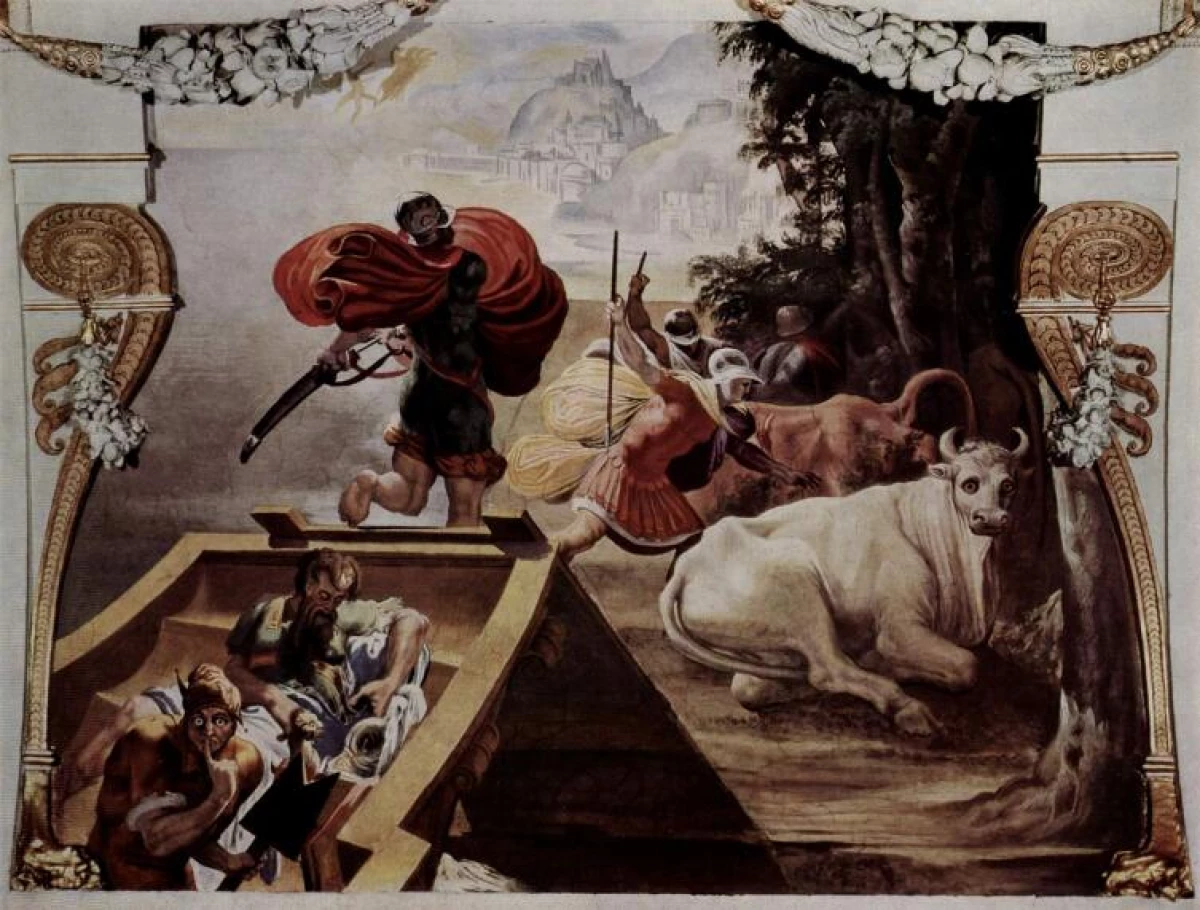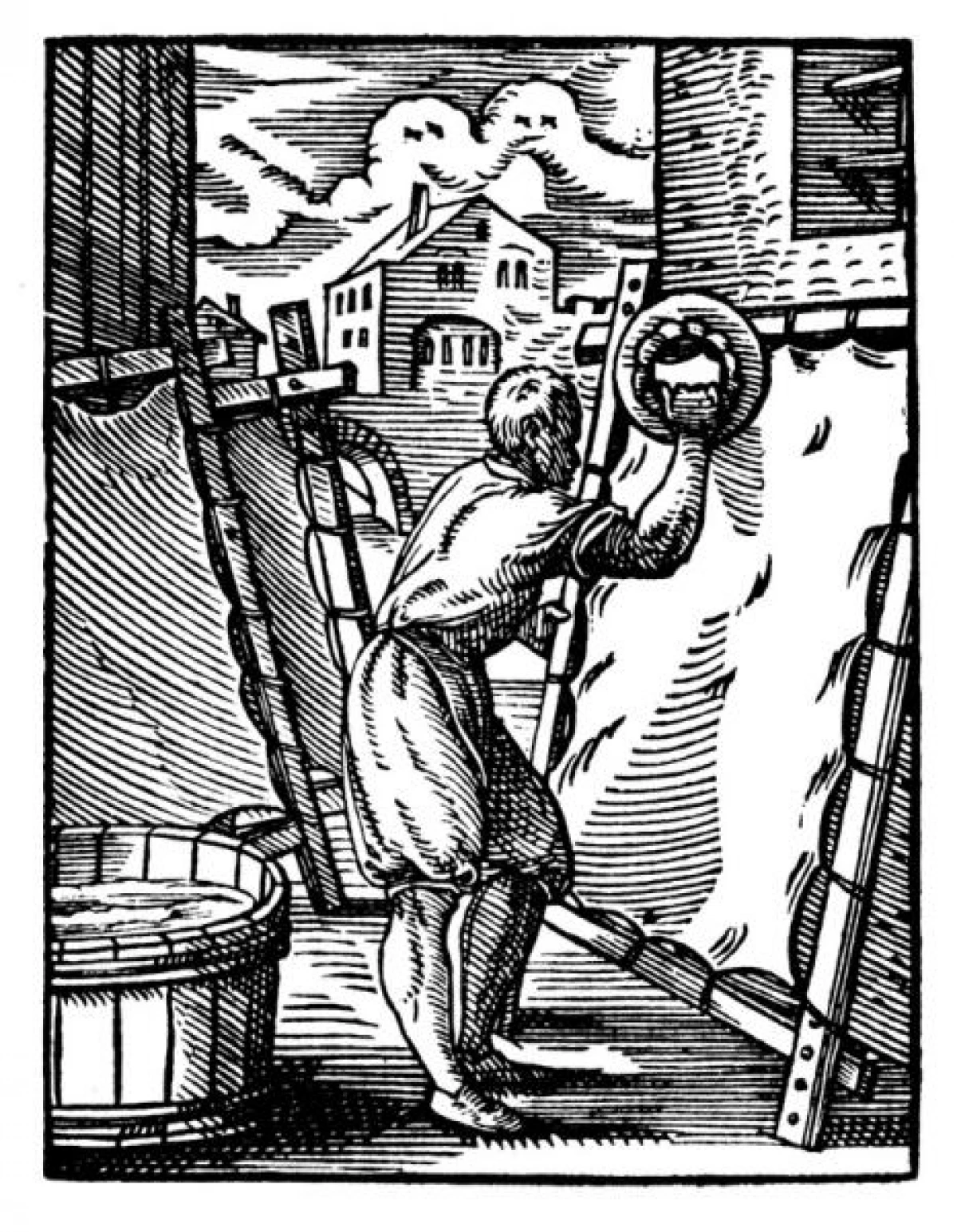
The bull of the sun and the bull of the Moon, the fast cherub and the Golden Taurus, the heavenly cow and a cow singing ... Symbols of cattle is so rich that one article here will not cost. Therefore, we continue to sue mythical cows for udder.
Life source
Let's start with the fact that the cow on meat peasants never hurried. After all, this animal was a constant and reliable source of milk, and even the calves gave birth. Therefore, in our villages, they were always treated as a cormalie and affectionately called a borer or a pestras. And in the fairy tale "Tinch-Havroshchka" a cow and performs the magic assistant and the defender of the unfortunate orphan.
On the meat "Bury" was usually hammered when they became very old. In any case, the death of the cow was often for the poor peasant a real tragedy.
Sergey Yesenin:
... did not give the mother of the Son, the first joy did not go. And on the cola under the skiing skin of the breeze. Soon on the buckwheat, with the same sons of fate, they will connect her loop on her neck and lead to slaughter. It is complaints about the horns of sad and skinny in the ground ... a white grove and herbal meadows dreams.Robert Burns:
... and bad farmers of the case: then the harvest was burned with a sacrificent force, then suddenly burly died, the bull became saint ...Moreover. In some myths, cows and bulls directly participated in the creation of the world. For example, Zoroastrians have a good god of Ahura Mazda, the first of living beings created exactly the bull - "White and Shining, like a moon." He lived for a long time (he killed by the evil God Ariman), but from the soul of the first bull there were disputes of all created subsequently.
Scandinavians played a similar role to the Cova Audum. She appeared at the very beginning of the time from the Inea that filled the world abyss. There is then there was nothing particularly, so the Audum licked salty stones covered with the same Inem, and fed the first living creature with milk - the world of imir, the world was subsequently created from the body. Well, a bourne-ancestor of Odin and other Scandinavian gods soon appeared from the crushed stones.

Patience and work
As we already know, the full bulls personified the blind rage and men's potency. No wonder the part of the bulls went to slaughter, and the part was left as "manufacturers", seeding cows.
Joke:
Veterinarian in a special piping conducts artificial insemination of cows. Having finished, he goes to exit, but his tight ring was opened by cows. - Oh well! Fuck! What do you want? One cow looks into his eyes and sad says: - And kiss?Other thing - ox. This is the same bull - only neutered, and therefore, much more calm and humble. The oxen was also shouted, because they played a crucial role as the potential animals - first of all, on the smelting. The ox continued to personify the power, but the power is crooked and bad. Therefore, it became a symbol of hardworking, patience and silence (the story of the Ukrainian writer Panas Peacery and is called "Hіba to choke will, Yak Yak Mall to?"). "Sometimes" called, for example, the medieval scholasto foma Aquinas.
G. K. Chesterton:
Thomas was heavy, like an ox, thick, slow and meek, very meek and generous, but not too sociable. His shyness was stronger than the humility requires ...
Bull on camp and moloch
Bull also performed as a sacrificial animal. Usually it was sacrificed to solid gods - like the same Zeus. I read somewhere that after the opening of my famous Pythagores theorem on joys, the sacrolling in the glory of Zeus already a hundred bulls (see, very much the famous mathematician was very rich). However, the opposite happened - when the bull was sacrificed ... people. More precisely - not a bull, and a fast idol, which in the Bible was called molok. It is believed that the idol was a copper statue with a bullish head and elongated with his hands, for which small children put, and the fire was raised at the bottom. For other versions, the sacrifice was put inside a split statue.
D. Milton "Lost Paradise":
... Moloch was the first - terrible, all in the blood of innocent victims. Parents were in vain sobbed; The buzz of Bubnov, the roar of the pipes was muffled the death cry of children, inhibited on his altar, in the fire ...
Many researchers believe that the Greco-Roman information about the Carthaginsky cult of the horned god of fertility - Baal Hammon, was reflected in the form of a molor, to which the locals sacrificed children. True, this is either a blank on their eternal competitors - Carthaginian is unknown. However, the word "moloch" firmly entered our speech as a metaphor of ruthless strength requiring permanent sacrifices ("Moloch of War", "Moloch Totalitarianism", etc.).
Abundance and wealth
In cows, our power, in cows our need, our clothes in cows, our victory in cows. Zend-Avesta, Sacred Book of ZoroastrianismFurious herds of cows for a long time were considered the main evidence of wealth and well-being. For example, the Latin word Pecunia (property, ownership, wealth) is directly derived from Pesus (Cattle).
You can remember the Bible Book of Genesis (Ch. 41), where the Egyptian pharaoh dreams, in which skinny cows eaten fat cows. And the Jewish young man Joseph interprets the dream as the foresight of the cramming and hunger.

Of course, the cows required not only to fall out, but also to guard. The same dashing American shepherds - cowboys (from "Cow Boys" - "Cow Guys") - defended their herds not only from predators, but also from thieves.
In the myths of different peoples, full of plots, where the abduction of other cows and bulls was filed as a feat that neither heroes nor the deity were beaten.
For example, the ancient Greek God Hermes already in childhood earned a reputation as an invented and a seamless guy - after he stole the cows from Apollo himself. So that the herd could not find, he tied to the tails of the branches, which traces were noticed ...
The abduction of Gerion's cows has become the 10th feat of Hercules. The main problem was that the herd had to be driven to Greece from the islands of the Far West. Therefore, on the path, Hercules had to overcome many natural barriers, someone to kill and even erected in the Gibraltar Strait of the famous Hercules pillars.
Odyssey and his team was lucky. Returning from the Trojan war, they stopped on the island, where the flock of Helios's sacred bulls passed. Hungry travelers, despite the warning of their commander, killed several cows.
Homer "Odyssey":
... everything was cut into parts and began to fry the spits. Gods with the same thing - a banner, in the fear of us, gave: the skin was crawled, and the raw meat and meat and meat, shot from the skewers, the referee published the referee. Over six days my recalcitrant satellites must bone the selected bulls of Helios and fir their meat ...
Subsequently, the angry Marine God, Poseidon will sing the entire team, with the exception of Odyssey, who did not take part in the murder. Lovers of Celtic Folklore will surely remember the legend with the eloquent name "Abduction of the Bull from Kualang." There, because of the bull, a whole war broke out, where the Irish Hero of Kukhulin was brightly showed.
"Abduction of a bull from Kualang":
... All these glorious acts committed by the kitchen before, do not go to any comparison with its exploits on the Great War, which the rest of Ireland under the leadership of Eililla and MedB, King and Queen Connakhta began against Olster to take possession of the brown bull from Kualgn. This bull was one of the two creature truly magical origin (the second - Finnbenakh, a belggy bull from Connakhta - S.K.) ...The fact is that in the past, both bulls were ... pigs of God himself, and then went to people. Beloryogo bull was at Eililla, and the brown - Dair. Medb, which did not want to give up his husband, sent to Daire ambassadors - with a request to buy brown bull. But one of the ambassadors got drunk and began to chat that even if Daire refused, they would still selected the bull with force. So, the word for the word, and the war began ... However, such clashes because of the cows still flare
between cattle breeding tribes of Africa. For the same militant Masaev, a male valor is considered not only to go to a lion with one spear, but also to lead another herd.

And the argument of one of the African cattle breeders about good and evil even became a labeled mement about the specific morality, which is often found in the "civilized" citizens:
Evil is when I stole a flock of cows, and good - when I stole a flock of cows.Writes on the skin
Hamlet: Barani skins, Horatio go to the parchment? Horatio: Yes, Milord, and calfs too. Hamlet: only rams and chicks can be treated with such nonsense. (V. Shakespeare "Hamlet", Per. Y. Lifshitsa)Finally, it is worth mentioning that in the Middle Ages, livestock served as a source of not only milk and meat, but also parchment. If you believe the stall of the senior, a popular material for books Parchment becomes in the 2nd century BC, when the Egyptian kings have introduced a ban on the export of papyrus. And with its name, the new material is obliged to Pergamum - the city in Malaya Asia.

Parchment made of undergravy raw skin. At first, it was so called only the skin of sheep and goats, which was used in the south of Europe. In Germany and France, it was often used by Wellaum - thin skin of calves (preferably newborns or at all in the womb). The latter was considered better.
It is not surprising that the parchment was very expensive and after the appearance of the paper quickly came out of everybody.
To be continued…
Author - Sergey Kuriy
Source - Springzhizni.ru.
